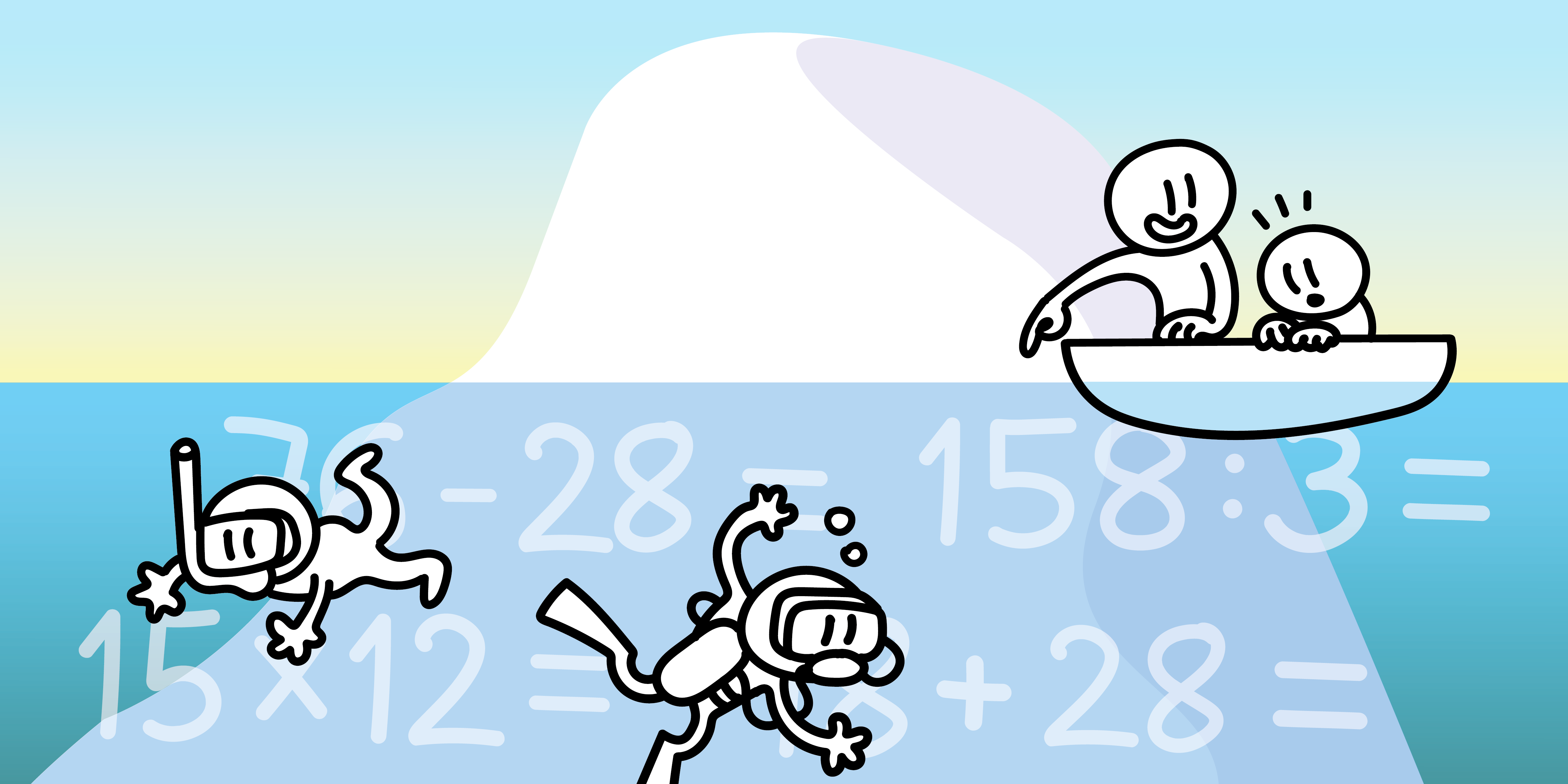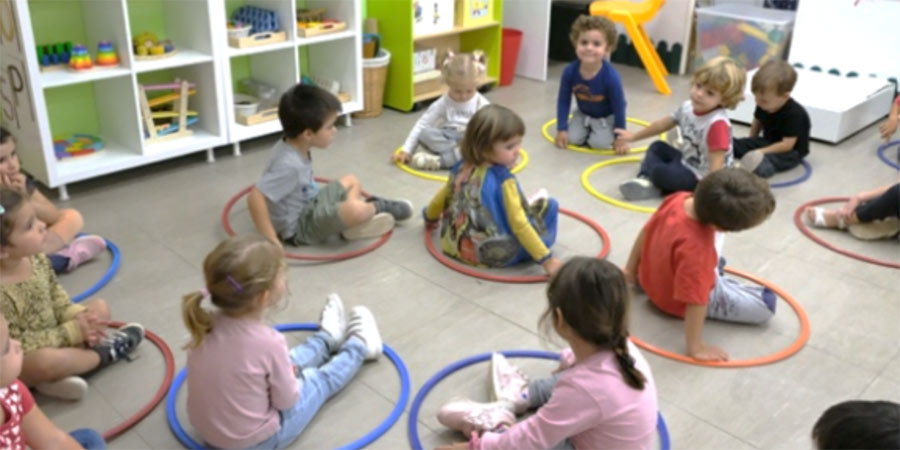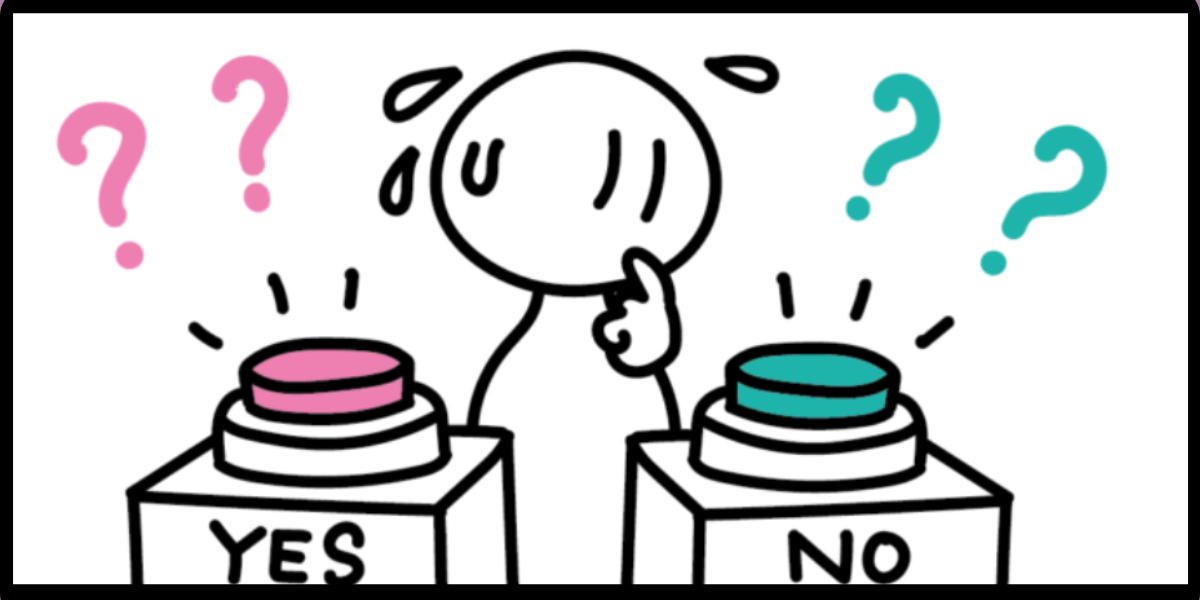How many times have we heard “My son can count to 20!” It’s something parents say, they’re excited to see their little ones growing up. However, teachers and math-teaching experts see much more than a child reciting a series of numbers.
Knowing how to count is one of the basic skills in mathematics. It’s a lesson that is relevant to our day-to-day lives, as we need it in any activity we do. But not taking the necessary time to complete the lesson is quite common.
Learning to count is much more than memorizing a sequence of numbers and being able to repeat them automatically. In this training capsule, with one of our didactic referents, Cecilia Calvo, we analyze the importance of counting, a skill on which arithmetic calculation is based.
Our goal at Innovamat is to provide useful resources to teachers. Because we know that simply repeating something until it is memorized is no guarantee of learning how to count, nor does it give this skill any meaning in everyday life.
Today, in this article, we focus on really laying the foundations of learning how to count to help your students learn arithmetic calculation in the future.
We will explore the ins and outs of such an important concept in mathematics. We will analyze exactly what it is and give you some tips to improve student learning in the classroom by providing you with encouraging and effective activities.
Table of contents
Differences between rote counting and rational counting
Two different concepts, but both are necessary.
People often confuse the idea of counting. For example, when we say that a child knows how to count to 30, we mean that they only how to list the numbers between 1 and 30. As teachers, however, we know that this is not enough and that we need to push further. For this reason, we distinguish between two types of counting:
- Rote counting
- Rational counting
Rote counting is the series of words associated to each number. Whereas rational counting is related to knowing how many objects are in a given set.
Sometimes when children learn the series of words, they do not distinguish where the words begin and end. That is why we must teach them to associate a movement with each word. For example, when we say “one” we move our hands in a certain way; when we say “2”, we change that movement; then we repeat “one” with the same movement; “2”…; and so on.
Once students have learned this association between words with movements and the series of words associated to each number – what we call rote counting – they must be able to relate it to a series of objects. As this involves very specific difficulties, we suggest also practicing the skills specific to counting objects.
We can say that a child knows how to count to 20 if we give them a set of 20 objects and, in addition to reciting the series of words correctly, they know how many objects there are.
The main problem of rote counting
Why do students learn to say ‘the previous number’ before reciting the sequence backwards?
Rote counting is learned in stages and has certain difficulties that we often overlook. The first stage is when you tell a child to count from 1 forward, and to do so up to the highest number they know at that time. But then a task that is a slightly more difficult begins: saying the next number.
When you ask a child to say one more than 7, you don’t mean for them to recite the series of numbers from 1 onward, you’re asking if they know that 8 always comes after 7. Even though it is a very basic concept to us, for them, it isn’t.

The same goes for the alphabet: if you’re asked what the letter after ‘s’ is, you don’t need to start reciting from ‘a’ but you do, perhaps, from ‘o’. For example, you might say “o, p, q, r, s…t”.
Saying subsequent numbers without starting from the beginning is a task that requires a greater cognitive effort than simply counting forward.
Therefore, a child will be able to count forward from any number if they learn these two steps:
Step 1. Count forward from 1.
Step 2. Say one more than the given number.
This is a basic skill in addition. It really requires a lot of thought, right? However, we must bear in mind that the greatest difficulty arises when we disrupt order and count backward. In these cases, there are students who first need to count forward to remember which number comes first. As it is so important that this process becomes automatic, it is a good idea to practice counting backward. This will also encourage learning to subtract.
Notice how rote counting has its difficulties, even if it’s just counting one at a time. So let’s take a more nuanced approach to the general idea that rote counting is easier than rational counting.
Grouping objects in 10s helps us count
It is an encouraging and effective system.
Imagine you have a box with lots of pencils, and you empty it onto a table in the classroom. If we ask the children how many pencils there are, the easiest way to count them would be to group them. This is the most effective strategy for two reasons:
Reason 1: The students can share the task
When we group objects in 10s, we make it easy for children to share the task and decide between themselves whether it’s a good idea to group before counting.
As our number system is decimal, it is best to group in 10s. For example, if there are 53 pencils, it means there are 5 groups of 10 and 3 pencils spare. The child can quickly count aloud in 10s, indicating each group as they go. They will say: “There are 10, 20, 30, 40, 50, and these 3; a total of 53 pencils.”

Deciding whether to group depends on the task. As we count in 10s very quickly, we tend to follow this strategy.
Reason 2: Counting in groups is often easier
After counting, we often have doubts and want to make sure we have done so correctly. In this case, re-counting is much easier and faster if the objects are already grouped.
How to assess counting in the classroom
When we ask counting questions in writing only, we miss a lot of information.
We know that sometimes, because of the amount of students, it is difficult to assess counting verbally, but it is essential if we want to do so properly.
A written task will save us time but will not give us a complete assessment because there may be other factors that come into play in writing.
For example, maybe a child doesn’t know how to write a number, but knows how to count objects perfectly.

In addition, in a written task, we leave important information out along the way. For example, if we ask a child to write down all the numbers from 20 to 30 or to continue the series “20, 21, 22…”, it may be that in writing they have learned that they answer by writing “two, two, two, two, two, two…” and then “one, two, three, four, five…” for the second digit. This way, we will not know if they have really internalized a number called 21, because they are only applying a trick to answer the specific question we ask.

If the assessment is only carried out in writing, we will not be able to know if a child really knows how to count objects. We will have to combine written and oral tasks to carry out a complete assessment.
Shall we move on to the practical part?
Everything can be learned by practicing, but learning is more appropriate and effective if a methodology is applied that helps students understand the ‘why’ of each step.
Now that you have reached the end, we’ll stop droning on and move on to the more entertaining part of the article:
We encourage you to try one of our first grade elementary school counting activities with your class
You will see that we work on counting from 1 to 20 with the Number Line. It is a very complete activity as it uses both the teaching guide and the counters. Tell us your impressions of the Innovamat experience!
If you want more, on our website you will find a teaching curriculum with all the content and resources in sequenced sessions, from elementary to middle school.
At Innovamat, we combine teacher training, teaching experience, research and constant support so that the future of math teaching has more than one path. This is what motivates us.
Remember that we’re always there for you to help solve any doubt you may have, count on us!







